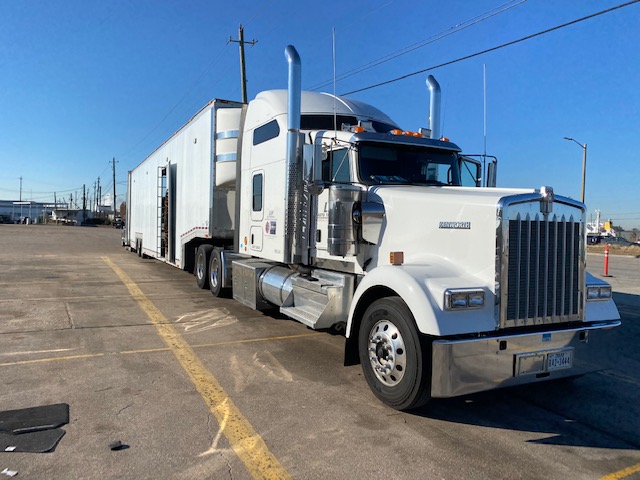

Introduction
The automobile has come a long way since its inception, as has in-car entertainment. From the early days of radio to today’s high-tech streaming services, car entertainment systems have evolved remarkably. Let’s journey through time to explore the fascinating evolution of car entertainment.
The Birth of Car Entertainment: The Radio Era
The integration of entertainment into cars began with the introduction of the radio. In the 1930s and 1940s, car radios became popular, allowing drivers and passengers to enjoy music, news, and entertainment while on the road. The radio brought a new level of excitement to car journeys, transforming long drives into enjoyable experiences.
The popularity of car radios continued to grow, and by the 1950s, they were a standard feature in many automobiles. Music stations became a staple of radio programming, and drivers could tune in to their favorite stations as they cruised along highways.
The Rise of Car Audio Systems and Cassette Tapes
In the 1960s and 1970s, car audio systems saw significant advancements. Cassette tape players emerged as the new standard for in-car music, offering portability and the ability to play personalized music mixes. The cassette era allowed drivers to create their playlists, giving rise to the concept of the “road trip mixtape.”
Music enthusiasts could now enjoy their favorite tunes during their journeys without relying solely on radio broadcasts. The cassette tape’s popularity continued into the 1980s and early 1990s, with auto manufacturers integrating cassette players into their vehicles.
The Digital Revolution: Compact Discs (CDs)
The digital revolution in the 1990s brought another significant shift in car entertainment with the introduction of compact disc (CD) players. CDs offered better sound quality and were more durable and resistant to wear than cassette tapes. As a result, CD players became the preferred choice for car audio systems.
The compact disc era also brought the convenience of skipping tracks and random access to music. Drivers could now enjoy a wide selection of songs without rewinding or fast-forwarding as they did with cassette tapes.
The Digital Age: MP3 Players and Digital Audio
The early 2000s marked the emergence of MP3 players, such as the iconic iPod. With massive storage capacities and easy computer synchronization, MP3 players revolutionized how people consumed music. Car manufacturers began integrating auxiliary input jacks and USB ports in vehicles, allowing drivers to connect their MP3 players directly to the car’s audio system.
Additionally, in-dash CD changers were replaced by CD players that supported MP3 and other digital audio formats. This allowed users to burn their music collections onto CDs with dozens of songs, freeing up space in the car and reducing the need to carry physical discs.
The Streaming Era: Internet Connectivity and Smart Integration
The latest and most significant evolution in car entertainment comes with the advent of internet connectivity and smart integration. Modern vehicles now feature infotainment systems that support streaming services, allowing drivers and passengers to access an endless array of music, podcasts, and audiobooks on the go.
Services like Spotify, Apple Music, and Pandora seamlessly integrate into car infotainment systems, offering personalized playlists and on-demand music choices. Voice-activated controls and touchscreens make navigating through music libraries a breeze, ensuring that drivers can stay focused on the road.
Furthermore, in-car entertainment systems now include connectivity features such as Apple CarPlay and Android Auto, enabling drivers to mirror their smartphone interfaces on the car’s display. This integration brings familiar app interfaces to the vehicle, making it easier to access navigation, music streaming, and other essential smartphone functions without taking your hands off the wheel.
Additionally, car manufacturers are exploring the integration of voice-activated virtual assistants into their infotainment systems, further enhancing the user experience and safety on the road.
Conclusion
The evolution of car entertainment has mirrored the technological advancements and changing preferences of drivers and passengers. From the early days of radio to today’s streaming services, car entertainment has continually evolved to provide more options, better sound quality, and improved user experience.
Advancements in autonomous driving technology could also further revolutionize car entertainment. As drivers become more hands-free and vehicles take on the role of chauffeurs, entertainment systems can play an even more significant role in providing enjoyable experiences during the journey. Virtual reality (VR) and augmented reality (AR) entertainment options could be integrated, turning the car into a mobile theater or gaming hub.
Moreover, car manufacturers increasingly collaborate with entertainment platforms and content providers to offer exclusive in-car experiences. For instance, some luxury vehicles come equipped with premium audio systems from renowned brands like Bang & Olufsen or Bowers & Wilkins, providing concert-like sound quality during the drive.
Despite these exciting developments, car entertainment also raises particular concerns. Distracted driving remains a critical issue, and the increased availability of in-car entertainment options can potentially divert drivers’ attention from the road. Therefore, balancing an enjoyable in-car experience and focusing on safety is essential for car manufacturers and technology providers.
In conclusion, the evolution of car entertainment has been a fascinating journey through the ages. From the early days of radio to the present era of streaming services and smart integration, car entertainment systems have continuously adapted to meet the demands of tech-savvy drivers and passengers.
Looking ahead, the future of car entertainment is set to be even more connected, immersive, and intelligent. As technology advances, in-car experiences will be further enriched with personalized content, voice-activated controls, and cutting-edge entertainment options. However, with these exciting advancements, the importance of prioritizing safety on the road cannot be overstated.
Car manufacturers, content providers, and technology companies must work collaboratively to ensure that the evolution of car entertainment enhances the driving experience while keeping safety at the forefront. As we embrace the future of mobility, car entertainment will undoubtedly play an integral role in making our journeys more enjoyable, entertaining, and convenient than ever before.
